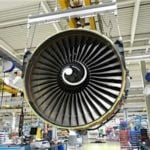Aerogel was such a breakthrough — literally, almost as light as air, yet a solid — that it challenges designers to engineer a problem for its solution. Years after its development, it hasn’t yet seen widespread applications, despite its unique properties.
It’s the lightest solid on earth, but how can it be used?
Invented in 1931 by Samuel Stephens Kistler, it fascinates due to its classification as a solid, with the weight characteristics of air and a near-fluidic appearance. Although it is gelatinous, it is not what you typically think of as a gel.

Aerogels are between 97 and 98.8% air. A cube of Aerogel weighs only slightly more than the same volume of air. Among other properties, they are superb thermal insulators. They have already found some applications in the Aerospace industry, including Mars missions and the Stardust comet particle-return mission. Although space flight, where weight and thermal properties are critical, is an obvious Aerogel application, design engineers are only beginning to tap into the unique qualities of Aerogel.

The unique characteristics of Aerogel
Designers and engineers can exploit some of the unique characteristics of Aerogel:
- Nearly as light as air: a block the size of a 180 pound person would weigh only one pound.
- Low density
- Translucent
- Insulates against heat: 0.023 W/mK at 100 degrees C
- Sound insulation up to 1000 times greater sound insulation than some polyurethane foams
- Fragile: its low density makes it not suitable for impact or stress areas of engineering
- Aerogel is 3% silica and carbon (approximately) and 97 air.
Video featuring Aerogel:
Why hasn’t it become mainstream?
The most extensive applications so far of this near-revolutionary material are insulations, including for some modern building applications. Some unique applications engineered so far include:
- A medical device for controlling hemorrhaging: it expands into the wound, sealing it
- Super lightweight insulation in jackets
- Space flight insulation materials.
Aside from those, the “Aerogel industry” hasn’t been adopted as widely as expected, given its unique characteristics. One of the reasons is the cost of manufacture. Since it is relatively difficult to manufacture in high volumes, price becomes a factor. For smaller applications, where weight is the most significant factor — notably aerospace — it makes sense. For clothing insulation or boots, it can be cost-prohibitive.

It also doesn’t endure well, in terms of tensile strength.
These issues are keeping Aerogel a niche, although it is a product with great promise in advance engineered applications where it’s “light-as-air” characteristics and extraordinary insulation properties are specified.
Development of the world’s lightest solid
In 1931, Professor Kistler looked for a way to solve the inherent issues with “jelly.” While gelatin holds water in its structure, if it dries it will crack. He developed a method to replace water with alcohol. Once the alcohol is evaporated, Aerogel formed — the world’s “least dense solid.” This creates a “solid” almost as light as air.

































